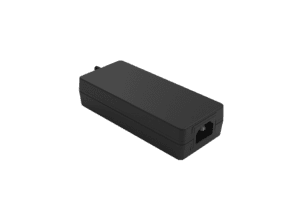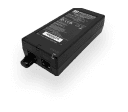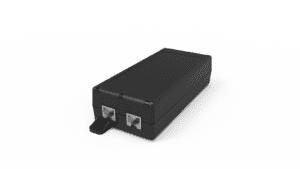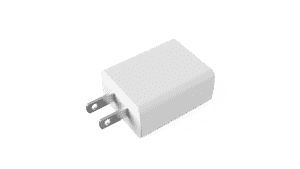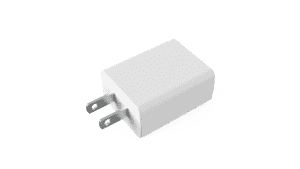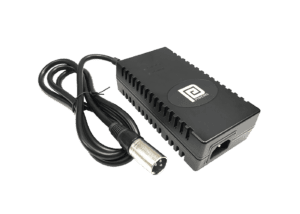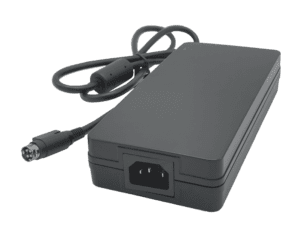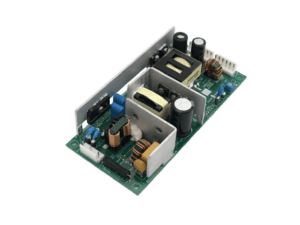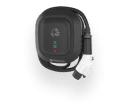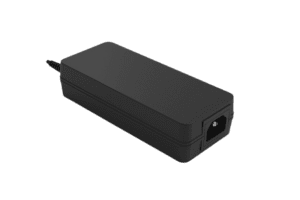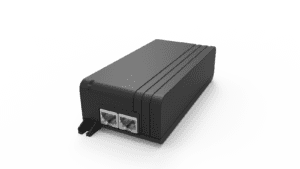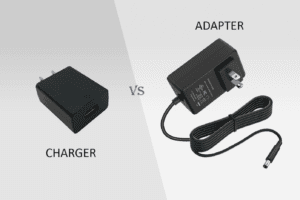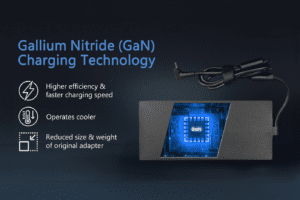BLOG
Best Guide to Designing IP67 and IP68 Waterproof Robot Charging Stations for Harsh Outdoor Deployments
Table of contents

In an era where autonomous robots handle deliveries, security, maintenance, and agriculture, the infrastructure that supports them must be just as advanced—and just as rugged. When it comes to charging systems in outdoor or industrial environments, reliability depends on one critical factor: Ingress Protection (IP) rating.
IP67 and IP68-rated robot charging stations are the industry benchmark for weatherproof performance. These ratings ensure charging docks can withstand full dust ingress, heavy rain, and even short-term or long-term water immersion. For outdoor deployments, designing to IP67 or IP68 standards isn’t a luxury—it’s essential for performance, safety, and uptime.
In this comprehensive guide, we’ll walk you through everything engineers, product managers, and robotics OEMs need to know to design, build, and deploy waterproof charging stations that survive the elements—and thrive in the field.
Understanding IP67 and IP68 Standards for Charging Stations
IP (Ingress Protection) ratings, defined under IEC 60529, provide a universal standard for determining a product’s resistance to solid objects and water intrusion. The two most critical levels for outdoor robot docks are IP67 and IP68.
Top Features
- IP67: Total dust protection + immersion in water up to 1 meter for 30 minutes
- IP68: Total dust protection + prolonged immersion in water beyond 1 meter, depth/time defined by the manufacturer
- Gasket-sealed housing, waterproof connectors, and protected PCB assemblies
- UV-resistant and corrosion-proof enclosure materials
Top Benefits
- Prevents moisture-related failures in rain, snow, and washdown conditions
- Protects power electronics from particulate and corrosion damage
- Ensures safety in high-traffic or public-facing environments
- Supports uninterrupted robot operation in outdoor and industrial zones
Best Practices
- Choose IP67 for general outdoor use; IP68 for flooding or submerged risk
- Use certified components—housing, connectors, seals—not just enclosure claims
- Integrate pressure-equalization membranes to prevent condensation buildup
- Test as a system, not just individual parts
The level of protection should match the risk environment—not just the marketing specs.
Key Mechanical and Material Considerations for Waterproof Enclosures
A waterproof charging dock begins with mechanical engineering. The materials and structural design play a critical role in resisting water, dust, UV rays, and temperature cycles.
Top Features
- Polycarbonate, aluminum, or stainless-steel enclosures with IP-rated sealing
- Conformal-coated PCBs or fully potted power modules
- Silicone or EPDM rubber gaskets for panel sealing
- ePTFE hydrophobic membranes for breathable yet sealed pressure equalization
Top Benefits
- Withstands temperature fluctuations without cracking or warping
- Prevents ingress from fine dust or small debris
- Supports long-term outdoor installation without corrosion
- Protects internal electronics during high-pressure washdowns or weather events
Best Practices
- Avoid cheap plastics (e.g., basic ABS) that degrade under UV and heat
- Use stainless steel or powder-coated metal in high-impact zones
- Design sloped surfaces to shed water and prevent pooling
- Include drain paths and gasket guards to reduce seal degradation
Durability begins with what you build it from—and how you seal it.
Power System Design for Safe, Efficient Outdoor Charging
The heart of any robot charging station is its power delivery system. In outdoor applications, this system must be sealed, protected, and smart enough to react to real-time conditions.
Top Features
- Wide-input AC-DC or DC-DC power converters rated from -40 °C to +85 °C
- Overvoltage, short-circuit, and ground fault protection
- High-efficiency GaN or SiC switching for thermal control
- Battery communication support via CANBus, UART, or RS-485
Top Benefits
- Delivers safe, fast, and energy-efficient charging
- Protects both robot and dock from electrical hazards
- Operates reliably in extreme cold or heat
- Enables battery handshake protocols for charge verification
Best Practices
- Derate power output to allow thermal headroom in sealed IP68 designs
- Use power supplies with thermal shutdown and auto-restart logic
- Select components that exceed IP rating temperature and humidity thresholds
- Test with your robot’s battery management system under real load conditions
An IP-rated housing means nothing if your power module fails under heat or water stress.
CLIENT'S QUOTE
"Phihong’s PoE solutions have made a huge difference for us! Our network runs more efficiently, and we’ve seen real cost savings. We couldn’t be happier!"
Designing for Thermal and Environmental Stability
IP-rated stations often trap heat due to their sealed nature. Effective thermal engineering is required to manage this without compromising protection.
Top Features
- Heat sinks embedded into enclosure walls
- Internal airflow channels or forced ventilation using sealed fans
- Thermal sensors and firmware-based throttling
- Optional heaters for freezing environments
Top Benefits
- Maintains optimal internal temperature during charge cycles
- Prevents condensation or pressure differentials inside the dock
- Supports battery performance in sub-zero and high-heat environments
- Extends the lifespan of components and mechanical seals
Best Practices
- Use thermal modeling to simulate real-world load cycles
- Integrate thermostatic control linked to environmental sensors
- Avoid direct sunlight exposure if passive cooling is insufficient
- Separate power electronics from communication modules to reduce hot spots
Thermal regulation ensures your waterproof dock is not just sealed—but sustainable.
Smart Communication, Diagnostics, and Remote Management
A modern robot charging station is more than a power source—it’s an intelligent asset. With the right integrations, IP67/IP68 stations can provide data visibility, predictive maintenance, and fleet-wide coordination.
Top Features
- BMS integration via CAN or serial protocols
- Cloud connectivity or edge dashboards for remote diagnostics
- Event logging: temperature, voltage, charging status, and error codes
- LED or app-based status indicators for technicians and users
Top Benefits
- Reduces maintenance costs through proactive alerts
- Allows OTA (over-the-air) firmware updates
- Tracks performance to identify early component wear
- Enhances safety with automated shutdown or fault escalation
Best Practices
- Use secure communication protocols (e.g., TLS, AES)
- Design for fail-safe states if communication is lost
- Implement event-based maintenance alerts (e.g., moisture detected, over-temp)
- Provide a technician-accessible local interface (e.g., QR code or NFC)
With outdoor chargers scattered across facilities or cities, remote insight is mission-critical.
Use Cases for IP67/IP68 Charging Stations in Harsh Deployments
IP-rated stations support a growing range of outdoor robotics use cases. Matching IP level to operational context is key.
Top Features
- Sidewalk delivery bots operating in rain, snow, or heat
- Campus or warehouse security robots exposed to dust and wind
- Agricultural robots subjected to mud, irrigation, and direct sun
- Marine service bots or sewer inspection units requiring submersion resistance
Top Benefits
- Maximizes robot uptime by eliminating weather-based interruptions
- Reduces service labor by withstanding outdoor abuse
- Increases safety for operators, pedestrians, and environments
- Expands robot usability across industries and terrains
Best Practices
- Use IP68 for applications involving long-term immersion or flooding
- Install docks in elevated or sloped terrain to avoid pooling
- Verify that both the robot and dock are equally rated for ingress protection
- Test in field conditions—IP certification is necessary, but not sufficient
These stations aren’t just optional—they’re critical infrastructure for autonomous systems in the real world.
How Phihong USA Helps OEMs Build IP67/IP68 Charging Solutions
Phihong USA supports OEMs, system integrators, and robotics developers with rugged, outdoor-ready power components. From sealed AC-DC modules and waterproof connectors to smart, battery-aware charging systems, our solutions are built to survive and succeed in tough environments.
We help clients across logistics, agriculture, security, and public service deploy charging infrastructure with:
- IP67/IP68 certified power modules
- Wide-temp, high-efficiency DC power components
- Technical consulting for UL, CE, and IEC compliance
- Customizable BMS integration and remote monitoring logic
When you’re ready to take your charging systems out of the lab and into the field, Phihong is your partner in ruggedized power.

Contact Our Team Today!
Our dedicated sales team and international partners are prepared to support you with your latest projects and initiatives globally.
Explore More with Phihong USA
As we conclude our exploration of PoE technology, it’s evident how these innovations are streamlining power and data integration across various industries. Phihong USA stands at the forefront of this technological advancement, offering a diverse range of power solutions designed to meet the evolving needs of modern industries.
Phihong USA’s extensive product lineup includes:
- Power over Ethernet (PoE) Solutions: Delivering reliable power and data transmission over a single cable, ideal for simplifying network installations and reducing costs.
- AC/DC Adapters and Power Supplies: From compact adapters to industrial-grade power supplies, Phihong provides solutions that ensure efficiency and reliability in various applications.
- Battery Chargers: Customizable chargers for lithium-ion and lead-acid batteries, supporting a wide range of power requirements for mobility and industrial applications.
- Medical Power Supplies: Specialized power solutions designed to meet the stringent requirements of the healthcare industry, ensuring safety and reliability.
Phihong USA is committed to innovation and excellence, continually developing products that meet the highest standards of performance and reliability. Their global reach and dedication to customer support make them a trusted partner in powering the future.
Here are some useful links to explore Phihong USA’s offerings further and bring in new potential clients:
Visit Phihong USA to discover how their advanced power solutions can support your business needs. Whether you’re looking to upgrade your network, or find reliable power supplies, Phihong USA has you covered.
By choosing Phihong USA, you’re partnering with a leader in power technology, ensuring your operations run smoothly and efficiently with top-tier power solutions. Contact Us today!
FAQ
What’s the difference between IP67 and IP68 in robot charging stations?
IP67-rated charging stations are dust-tight and can withstand water immersion up to 1 meter for 30 minutes. IP68-rated stations, on the other hand, can survive deeper and longer immersion, often used in flood-prone areas or submerged locations. While both offer excellent environmental protection, IP68 requires more robust sealing, pressure testing, and thermal considerations due to lack of airflow. Choose IP67 for general outdoor environments like sidewalks or campuses, and IP68 for sewer inspection bots, marine environments, or remote installations prone to flooding.
How do I ensure my robot charging station is truly IP67/IP68 compliant?
To ensure true IP67 or IP68 compliance, system-level testing must be conducted following IEC 60529 standards. This involves vacuum-based dust testing and full water submersion testing at specified depths and durations. It’s important to test not just the enclosure, but the entire system—including connectors, vents, cable entries, and power modules. Always demand third-party lab certification and ask vendors for test reports. For mission-critical projects, field testing in real-world conditions is highly recommended in addition to lab results.
Can I use the same charger enclosure for both IP67 and IP68 use cases?
While IP67 and IP68 enclosures may look similar, internal design differences are critical. IP68 often requires more aggressive sealing, different venting strategies, and better pressure handling. For example, while an IP67 enclosure might use removable gaskets, an IP68 design may rely on fully molded or welded sealing. Additionally, thermal strategies differ—IP68 systems require better heat dissipation, as airflow is even more limited. If you’re considering using one enclosure across both applications, design for IP68 from the start, and scale down where needed.
What materials are best for building IP68 waterproof robot charging stations?
Ideal materials for IP68 applications include:
- Polycarbonate with UV stabilization for impact and sun exposure
- Marine-grade stainless steel or anodized aluminum for corrosion resistance
- Silicone gaskets or thermoplastic elastomers (TPEs) for tight sealing
- ePTFE membranes for breathable, waterproof venting
Internally, PCBs should be conformal-coated or potted. Connectors must be IP-rated with sealed caps. Avoid low-grade plastics or non-rated adhesives, as they can degrade in temperature cycling or chemical exposure.
How does Phihong help with compliance and integration of IP-rated charging stations?
Phihong USA provides fully engineered power systems designed for IP67/IP68 compliance. We support OEMs with:
- Certified, sealed power modules and charging platforms
- Assistance with IEC 60529, UL, and CE documentation
- Remote charging logic, thermal design consulting, and communication integration
Customized solutions for fleets of robots in logistics, agriculture, and defense
Our expertise ensures your station meets not just the technical requirements, but the real-world durability your project demands.

